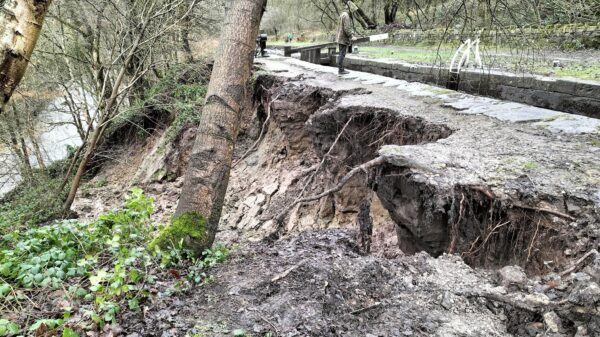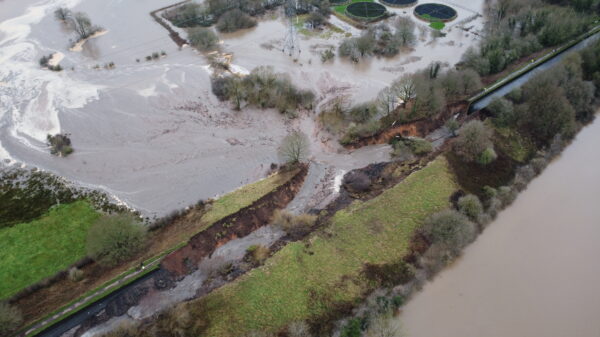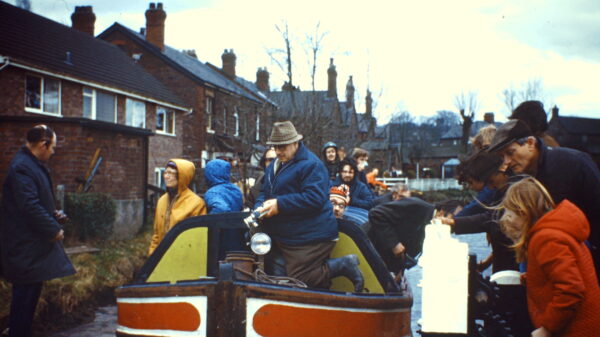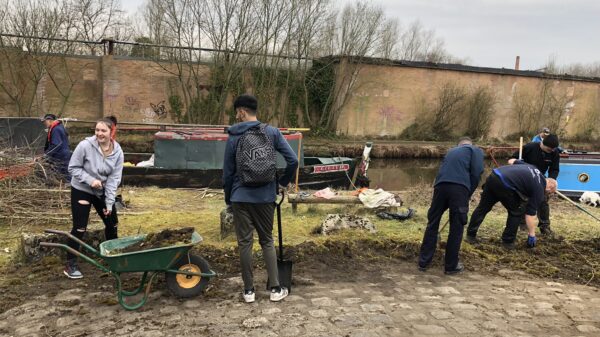A section of the Bridgewater Canal embankment near Dunham Massey in Greater Manchester collapsed on New Year’s Day after sustained heavy rainfall, resulting in water pouring into neighbouring fields and flooding a sewage works.
The BBC reported that 90mm of rain fell on north west England over the New Year’s period. A major incident was declared because of serious flooding across Greater Manchester, Lancashire and Cheshire, including the breach of the canal. Greater Manchester Fire and Rescue Service reported evacuating nearly 1,000 people during the incident.
The collapse has attracted widespread public attention: drone footage and photos of the breach have been widely shared across social media and one video became the ‘most watched’ on the BBC news website. Canal & River Trust has issued a statement making clear that the canal is not one of its waterways, and also stressing the vulnerability of all canals and infrastructure of this age to extreme weather arising from climate change.
The Bridgewater Canal is directly owned by the Bridgewater Canal Company Limited, which is owned by Peel L&P, a division of Peel Holdings plc. It forms part of the popular Cheshire Ring cruising circuit and is also an important north-south link between the Leeds & Liverpool Canal at Leigh and the Trent & Mersey Canal at Preston Brook, as well as part of the east-west routes across the Pennines on the Rochdale and Huddersfield Narrow Canals.
In 1971 there was another major breach nearby, at the Bollin Aqueduct. There was a real fear that the canal might never be reopened, and IWA mounted a vigorous campaign including holding the 1972 National Rally at Lymm and putting the proceeds towards the restoration of the canal. After a protracted stoppage the canal was reopened in 1973. The Bridgewater Canal Trust was set up in 1974 by the Bridgewater Canal Company and the local authorities through whose areas the canal flows, to allow the local authorities to take an active interest and financial responsibility for the maintenance.
While it is too early to know the likely outcomes and timescales, several points are immediately clear. This is the latest in a series of events that have affected various navigation authorities in the last couple of years, all arising from weather that would formerly have been viewed as extreme but which is rapidly becoming more common. The failure of waterway infrastructure can put communities at real risk, as was shown only too clearly at Toddbrook Reservoir in 2019. The cost of rectifying the damage is substantial: for instance, Canal & River Trust quotes an additional £10m spend after the storms of winter 2023/24. Waterway businesses have already been impacted by various long closures and it seems that more damage may result. And this is to say nothing of the impact on both leisure and residential boaters.
[The photo left, shows the 1971 breach – photo by Don Valentine]
Sue O’Hare, Chair of IWA’s Navigation Committee, said:
“This is clearly a very serious breach with major implications for both the Bridgewater Canal and our waterway network as a whole. It is gratifying to see its significance recognised through attention by the mainstream media, but this needs to translate into action to secure our waterways against the effects of climate change. IWA is campaigning through Fund Britain’s Waterways for adequate national and local government funding for all Britain’s navigable rivers and canals to ensure that future generations can continue to enjoy their many benefits.”
Colour photos by kind permission of @TaylorsAboardaNarrowboat (strictly copyright)





